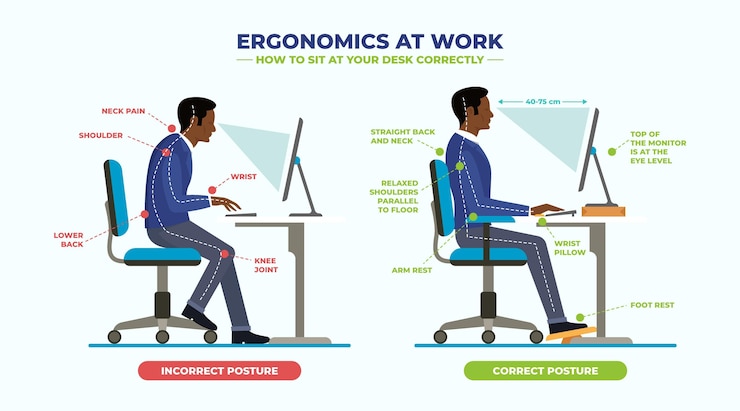
Back pain is a common issue that affects people of all ages. While many factors can contribute to it, one of the most significant is poor posture. Poor posture occurs when your body isn’t properly aligned, leading to unnecessary stress on the spine and the surrounding muscles. Over time, this can cause chronic pain and discomfort. Here’s a breakdown of how poor posture affects your back, along with tips to prevent and relieve back pain.
The spine is designed to support the weight of your upper body, but poor posture can throw it out of alignment. This misalignment places extra pressure on the muscles, ligaments, and nerves in your back, which can lead to pain, discomfort, and even long-term damage. Fixing poor posture early is essential to avoid worsening the problem. Common causes of poor posture include slouching, inactivity, and weak muscles, among others.
How Poor Posture Develops
1. Slouching When Sitting or Standing
Slouching is one of the most common and harmful habits for posture. To improve posture, start with proper seating—use a chair with good back support. Take breaks to stretch and move throughout the day, and be mindful of your posture. A good rule of thumb is to sit or stand with your shoulders relaxed and pulled back, your chest lifted, and your head upright. Bonus: standing up straight not only supports your body but also boosts confidence.
2. Carrying Heavy Bags or Backpacks
Carrying heavy bags or backpacks can strain your back and throw off your posture. When carrying a heavy load, your spine can shift out of alignment, stressing your back muscles, ligaments, and nerves. Over time, this may lead to long-lasting discomfort or injury. To avoid this, distribute the weight evenly by using both hands or wearing a backpack with two straps on both shoulders. If you’re frequently carrying heavy items, take breaks to rest your back and stretch.
3. Weak Core Muscles
Your core muscles, which include those in your abdomen, lower back, and hips, play a vital role in supporting your spine and promoting good posture. Weak core muscles can make it harder to maintain proper alignment, increasing your risk of back pain. Building core strength through exercises like planks, sit-ups, yoga, or Pilates can help stabilize your spine, improve posture, and reduce your chances of developing back pain.
The Broader Effects of Poor Posture
Poor posture doesn’t just affect your spine—it can also impact other areas of your body, such as your hips, knees, and feet. This can create a ripple effect of pain and discomfort, making everyday activities harder to perform. Poor posture can also reduce your mobility and flexibility over time, limiting your overall quality of life.
Steps to Prevent and Treat Poor Posture
To prevent poor posture and address the back pain it causes, start with a few simple steps. Practice good posture throughout your daily activities—keep your shoulders back, chest up, and spine straight when sitting, standing, or moving. When standing, distribute your weight evenly on both feet. When sitting, use chairs with proper back support.
Engaging in regular exercise is also key, especially workouts that target your core and back muscles. Strengthening these areas can help improve posture and reduce the risk of pain. For those already experiencing significant discomfort, professional treatments like Regenerative Cell Therapy may be an option. This emerging therapy involves injecting regenerative cells into damaged discs to promote healing and restore function. It’s being developed by companies like DiscGenics to provide solutions for managing back pain effectively.
Take Action for Better Posture and Health
Poor posture can have a serious impact on your back and overall well-being. By maintaining proper posture, staying active, and seeking suitable treatments when needed, you can reduce your risk of back and improve your quality of life. If back pain persists, consulting a chiropractor or physical therapist can help you create a personalized plan to address your needs.